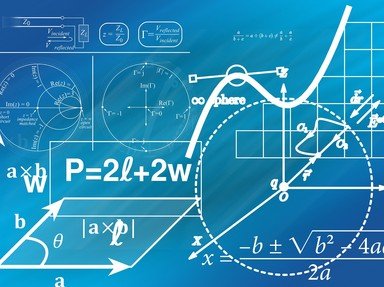Quiz Answer Key and Fun Facts
1. The first few triangular numbers are 1, 3, 6, 10, 15, 21... What is the general formula for finding the nth triangular number?
2. Which of the following formulas provides an alternative way to find the nth triangular number?
3. According to www.mathworld.wolfram.com, a figural number is a number that can be represented by a regular geometrical arrangement of equally spaced points. So, can triangular numbers be categorized as figural numbers?
4. Given the first few terms of triangular numbers: 1, 3, 6, 10, 15, 21..., the sum of any 2 consecutive triangular numbers is a (an) _____ number.
5. Here are the first 8 triangular numbers: 1, 3, 6, 10, 15, 21, 28, 36. Notice that the first 2 terms are odd, followed by another 2 even terms, and then another 2 odd terms, before 2 even terms again. In general, does this pattern hold true for all triangular numbers?
6. The sum of all the reciprocals of triangular numbers (namely 1/1 + 1/3 + 1/6 + 1/10 + 1/15 + 1/21 +...) is ___.
7. The smallest palindromic triangular number is 55. Is the Number of the Beast, 666 another palindromic triangular number?
8. We can use triangular numbers to solve mathematical problems. Suppose that 5 friends met in a birthday party and they wanted to shake each other's hands. So, how many handshakes would there be all together?
9. Which mathematician proved that every positive integer can be represented by the sum of, at most, 3 triangular numbers?
10. A very popular method to test whether a given number is a triangular number or not is by substituting that number into the formula n = 0.5 x [ [square root of (8t + 1)] -1 ], where t is the given number. If n is a whole number (1, 2, 3...), then the number is a triangular number.
Source: Author
Matthew_07
This quiz was reviewed by FunTrivia editor
crisw before going online.
Any errors found in FunTrivia content are routinely corrected through our feedback system.

